Edd Gent in Singularity Hub:
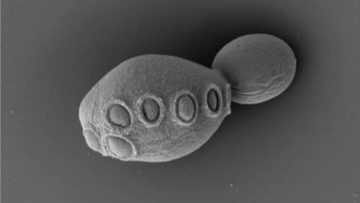 Our ability to manipulate the genes of living organisms has expanded dramatically in recent years. Now, researchers are a step closer to building genomes from scratch after unveiling a strain of yeast with more than 50 percent synthetic DNA.
Our ability to manipulate the genes of living organisms has expanded dramatically in recent years. Now, researchers are a step closer to building genomes from scratch after unveiling a strain of yeast with more than 50 percent synthetic DNA.
Since 2006, an international consortium of researchers called the Synthetic Yeast Genome Project has been attempting to rewrite the entire genome of brewer’s yeast. The organism is an attractive target because it’s a eukaryote like us, and it’s also widely used in the biotechnology industry to produce biofuels, pharmaceuticals, and other high-value chemicals.
While researchers have previously rewritten the genomes of viruses and bacteria, yeast is more challenging because its DNA is split across 16 chromosomes. To speed up progress, the research groups involved each focused on rewriting a different chromosome, before trying to combine them. The team has now successfully synthesized new versions of all 16 chromosomes and created an entirely novel chromosome. In a series of papers in Cell and Cell Genomics, the team also reports the successful combination of seven of these synthetic chromosomes, plus a fragment of another, in a single cell. Altogether, they account for more than 50 percent of the cell’s DNA.
More here.


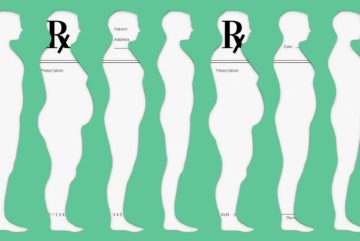 I
I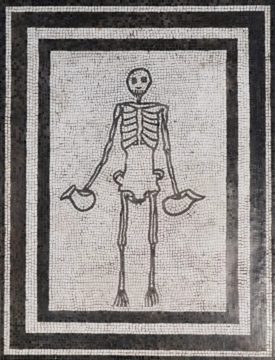 We are coming up the seventh anniversary of my grandfather-in-law’s death. Traditionally, in the Orthodox church, this occasion would be marked by a ritual that involves digging up the bones of the deceased, washing them white and clean, and then reburying them forever. In the period prior to that significant anniversary, there is ongoing exchange, both ritual and spontaneous, with the dead. Whenever food or drink is accidentally spilled from the table, it is said to be shared with the dead. The candles lit for the dead outside of churches are another effective way of initiating exchange. Food, fire, and prayer continue to pass across the boundary that death has made impermeable to ordinary speech and action.
We are coming up the seventh anniversary of my grandfather-in-law’s death. Traditionally, in the Orthodox church, this occasion would be marked by a ritual that involves digging up the bones of the deceased, washing them white and clean, and then reburying them forever. In the period prior to that significant anniversary, there is ongoing exchange, both ritual and spontaneous, with the dead. Whenever food or drink is accidentally spilled from the table, it is said to be shared with the dead. The candles lit for the dead outside of churches are another effective way of initiating exchange. Food, fire, and prayer continue to pass across the boundary that death has made impermeable to ordinary speech and action.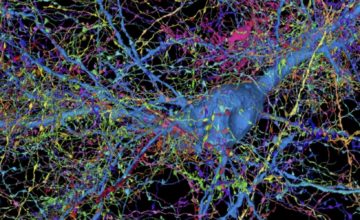 Can a computer be programmed to simulate a brain? It’s a question mathematicians, theoreticians and experimentalists have long been asking — whether spurred by a desire to create artificial intelligence (AI) or by the idea that a complex system such as the brain can be understood only when mathematics or a computer can reproduce its behaviour. To try to answer it, investigators have been developing simplified models of brain neural networks since the 1940s
Can a computer be programmed to simulate a brain? It’s a question mathematicians, theoreticians and experimentalists have long been asking — whether spurred by a desire to create artificial intelligence (AI) or by the idea that a complex system such as the brain can be understood only when mathematics or a computer can reproduce its behaviour. To try to answer it, investigators have been developing simplified models of brain neural networks since the 1940s Here’s a question for you: since the last general election, has the British government been tough or soft on immigration? Depending on your political inclination, the answer might seem obvious – but the reality is more complicated. On the one hand, the Johnson and Sunak governments have brought an end to EU free movement and promised to deport unwanted
Here’s a question for you: since the last general election, has the British government been tough or soft on immigration? Depending on your political inclination, the answer might seem obvious – but the reality is more complicated. On the one hand, the Johnson and Sunak governments have brought an end to EU free movement and promised to deport unwanted 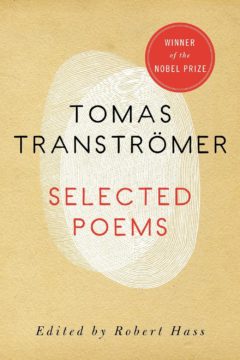 Tranströmer has been praised for the apparent effortlessness of his craft. The poet and critic
Tranströmer has been praised for the apparent effortlessness of his craft. The poet and critic  More shadows than men, really; just silhouettes, might as well be smudges on the lens. Hard to notice at first, the two undifferentiated figures in the lower left-hand of the picture, at the corner of the Boulevard du Temple. A bootblack squats down and shines the shoes of a man contrapasso above him; impossible to tell what they’re wearing or what they look like. Obviously no way to ascertain their names or professions. At first they’re hard to recognize as people, these whispers of a figure joined together, eternally preserved by silver-plated copper and mercury vapor; they’re insignificant next to the buildings, elegant Beaux-Arts shops and theaters, wrought iron railings along the streets and chimneys on their mansard roofs. Based on an analysis of the light, Louis Daguerre set up his camera around eight in the morning; leaves are still on trees, so it’s not winter, but otherwise it’s hard to tell what season it is that Paris day in 1838. Whatever their names, it was by accident that they became the first two humans to be photographed.
More shadows than men, really; just silhouettes, might as well be smudges on the lens. Hard to notice at first, the two undifferentiated figures in the lower left-hand of the picture, at the corner of the Boulevard du Temple. A bootblack squats down and shines the shoes of a man contrapasso above him; impossible to tell what they’re wearing or what they look like. Obviously no way to ascertain their names or professions. At first they’re hard to recognize as people, these whispers of a figure joined together, eternally preserved by silver-plated copper and mercury vapor; they’re insignificant next to the buildings, elegant Beaux-Arts shops and theaters, wrought iron railings along the streets and chimneys on their mansard roofs. Based on an analysis of the light, Louis Daguerre set up his camera around eight in the morning; leaves are still on trees, so it’s not winter, but otherwise it’s hard to tell what season it is that Paris day in 1838. Whatever their names, it was by accident that they became the first two humans to be photographed.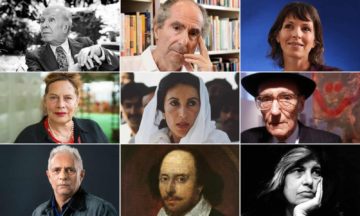 Andrew Wylie, the world’s most renowned – and for a long time its most reviled – literary agent, is 76 years old. Over the past four decades, he has reshaped the business of publishing in profound and, some say, insalubrious ways. He has been a champion of highbrow books and unabashed commerce, making many great writers famous and many famous writers rich. In the process, he has helped to define the global literary canon. His critics argue that he has also hastened the demise of the literary culture he claims to defend. Wylie is largely untroubled by such criticisms. What preoccupies him, instead, are the deals to be made in China.
Andrew Wylie, the world’s most renowned – and for a long time its most reviled – literary agent, is 76 years old. Over the past four decades, he has reshaped the business of publishing in profound and, some say, insalubrious ways. He has been a champion of highbrow books and unabashed commerce, making many great writers famous and many famous writers rich. In the process, he has helped to define the global literary canon. His critics argue that he has also hastened the demise of the literary culture he claims to defend. Wylie is largely untroubled by such criticisms. What preoccupies him, instead, are the deals to be made in China. Scientists have created an infant ‘chimaeric’ monkey by injecting a monkey embryo with
Scientists have created an infant ‘chimaeric’ monkey by injecting a monkey embryo with 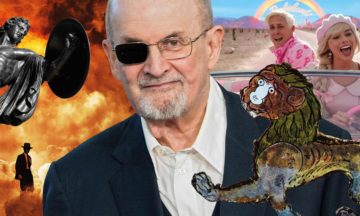 I have always been inspired by mythologies, folktales and fairytales, not because they contain miracles – talking animals or magic fishes – but because they encapsulate truth. For example, the story of Orpheus and Eurydice, which was an important inspiration for my novel
I have always been inspired by mythologies, folktales and fairytales, not because they contain miracles – talking animals or magic fishes – but because they encapsulate truth. For example, the story of Orpheus and Eurydice, which was an important inspiration for my novel  There are three kinds of prime numbers. The first is a solitary outlier: 2, the only even prime. After that, half the primes leave a remainder of 1 when divided by 4. The other half leave a remainder of 3. (5 and 13 fall in the first camp, 7 and 11 in the second.) There is no obvious reason that remainder-1 primes and remainder-3 primes should behave in fundamentally different ways. But they do.
There are three kinds of prime numbers. The first is a solitary outlier: 2, the only even prime. After that, half the primes leave a remainder of 1 when divided by 4. The other half leave a remainder of 3. (5 and 13 fall in the first camp, 7 and 11 in the second.) There is no obvious reason that remainder-1 primes and remainder-3 primes should behave in fundamentally different ways. But they do.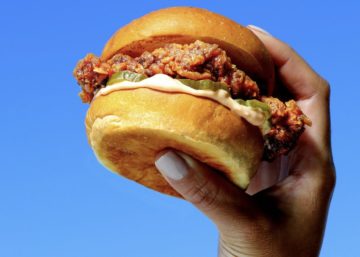 For the past century, agriculture in America has been getting
For the past century, agriculture in America has been getting  According to The Sullivanians, the story goes something like this. In the ’50s, just as Jim Jones was moving to make a Marxist revolution by nestling politics inside an Indianapolis church, one Saul Newton, alongside his fourth wife, Jane Pearce, sought to braid Marx and Freud and spark a revolution in and through the consulting room. Communist movements, they felt, had failed precisely because they left out the psyche and socialization. Psychoanalysis, on the other hand, was being used in conservative ways and was largely pro-family, pro-babies, and pro-adjustment to the difficulty of same. To unlock their full potential, each theory needed the other. The problem was that Newton was not a clinician. (The solution: lie about it.)
According to The Sullivanians, the story goes something like this. In the ’50s, just as Jim Jones was moving to make a Marxist revolution by nestling politics inside an Indianapolis church, one Saul Newton, alongside his fourth wife, Jane Pearce, sought to braid Marx and Freud and spark a revolution in and through the consulting room. Communist movements, they felt, had failed precisely because they left out the psyche and socialization. Psychoanalysis, on the other hand, was being used in conservative ways and was largely pro-family, pro-babies, and pro-adjustment to the difficulty of same. To unlock their full potential, each theory needed the other. The problem was that Newton was not a clinician. (The solution: lie about it.) One evening in 1932, Simone de Beauvoir joined Jean-Paul Sartre and his old schoolfriend, the philosopher Raymond Aron, for a drink at a bar in Montparnasse. The three of them enthusiastically ordered apricot cocktails, the specialty of the house. Aron, who had just returned to Paris from a year studying philosophy in Berlin, suddenly pointed to his glass and said: “If you are a phenomenologist, you can talk about this cocktail and make philosophy out of it!” According to Beauvoir, Sartre “turned pale with emotion.” This was exactly what he wanted to do: “describe objects just as he saw and touched them, and to make philosophy out of it.”
One evening in 1932, Simone de Beauvoir joined Jean-Paul Sartre and his old schoolfriend, the philosopher Raymond Aron, for a drink at a bar in Montparnasse. The three of them enthusiastically ordered apricot cocktails, the specialty of the house. Aron, who had just returned to Paris from a year studying philosophy in Berlin, suddenly pointed to his glass and said: “If you are a phenomenologist, you can talk about this cocktail and make philosophy out of it!” According to Beauvoir, Sartre “turned pale with emotion.” This was exactly what he wanted to do: “describe objects just as he saw and touched them, and to make philosophy out of it.” Not to trigger the ol’ existential panic, but 2023 is drawing to a close quite soon. That means it’s time to tally what the year in movies has brought us. So far, we’ve seen Wes Anderson
Not to trigger the ol’ existential panic, but 2023 is drawing to a close quite soon. That means it’s time to tally what the year in movies has brought us. So far, we’ve seen Wes Anderson